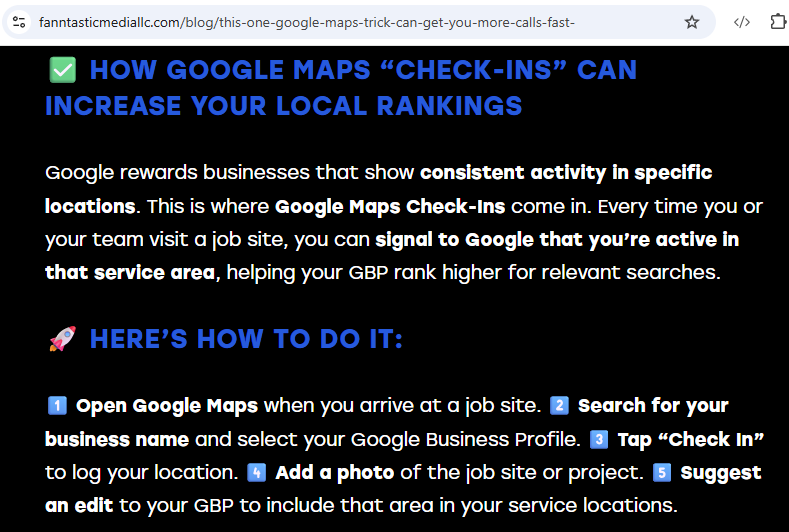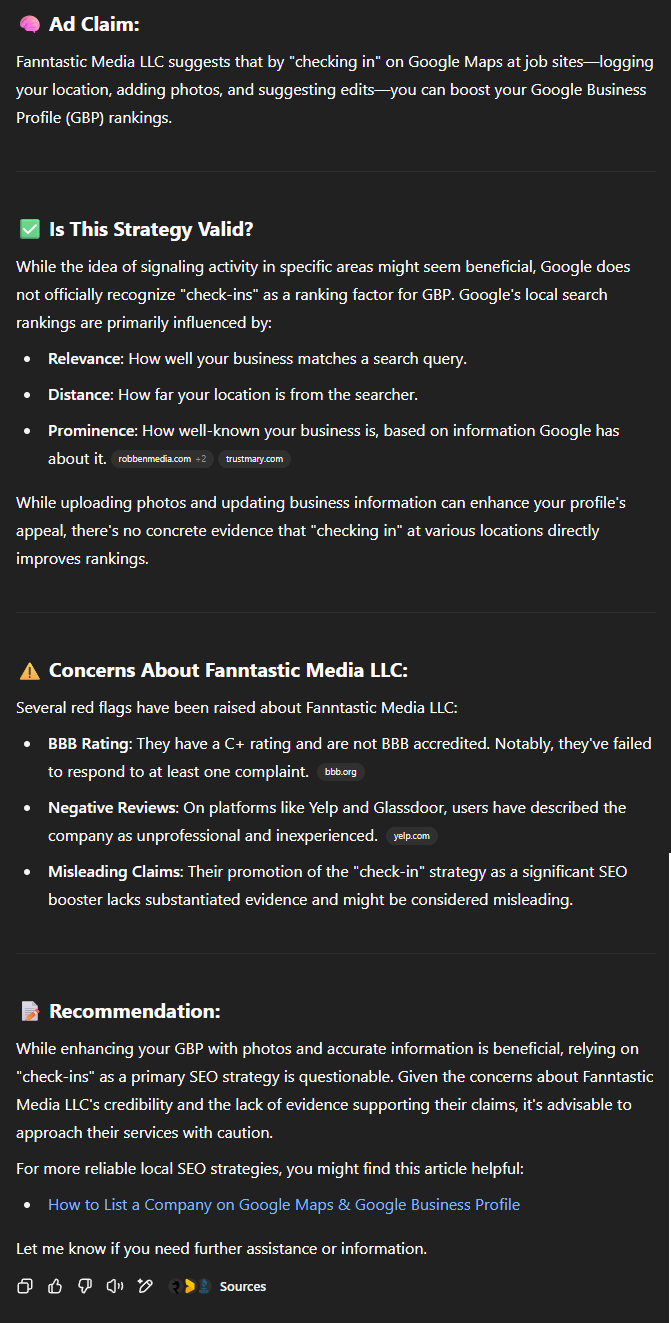All Heart, No Talent
Last Updated: June 11, 2025
Last Updated: June 11, 2025
Last Updated: June 11, 2025
Let’s talk about a word mix-up that costs small business owners a ton of money: inexpensive vs. cheap.
They sound similar, right? But they are wildly different.
That one little difference? It can mean the difference between smooth sailing and an expensive headache later on.
Imagine you’ve got a 20-year-old rust-bucket car you’re trying to squeeze one more year out of. In this case, when your goal is just getting that one extra year of use, buying the cheapest replacement part almost certainly makes sense.
But if it’s a vehicle you rely on to get to work every day? Cheap parts just lead to more repairs, more downtime, and more money wasted. You’re far better off investing a few extra dollars in the correct, OEM quality part because it will last, and you’ll only pay for the part and the labor one time, not 3.
It’s the same with your digital presence. Don’t throw bargain-bin parts at a tool you depend on every single day. If you miss out on just ONE sale, you will almost certainly blow away all your “savings” and then some.
One of the most common places we see this mistake? Domain registration. It’s not flashy. It’s not exciting. But it’s foundational. And it’s where the “cheap” vs. “inexpensive” trap gets a lot of people.
We see folks picking a domain registrar that’s $3 cheaper per year. That’s 25 cents per month. Less than 1 cent per day.
But here’s the thing: at some point, nearly everyone needs to do something more advanced than just pointing a domain at a basic website. When that time comes, those ultra-budget registrars fall apart.
Suddenly, you’re:
Both options? Way more expensive than just spending the extra 6 cents a day upfront.
We’ve been there. We used to use GoDaddy for our registrations. Once upon a time, they were great. Now? Not so much. Their support is a shadow of what it used to be. The upsells are endless. And they can’t even handle basic HTTPS redirects on domain forwards. That’s basic stuff. They just don’t offer it.
And that’s still better than many of the cut-rate providers out there. The really cheap ones? They’re often missing key features, have clunky user interfaces, and are prone to technical bugs that bring your site down. We had a client on Turbify whose domain was broken due to an issue on their end. Their response? “Yep, we know. No idea when we’ll fix it.”
Meanwhile, the client’s website stayed down.
If you save $3 per year but have to pay someone just once to fix a problem for $50… congrats! You’ve just wiped out 16.5 years of savings. For a single issue.
That’s not a deal. That’s a terrible investment.
We use Porkbun now and have been really happy. There are other great providers out there too. We have no affiliation with them, we’re just sharing what’s worked. The point is: spending a few dollars more for a reliable, full-featured, well-supported registrar is 100% worth it.
Another place we see people going down the “cheap” path: website builds.
We get it. A local web company quotes you $1,800. Someone overseas offers to do it for $1,500. You save $300. Great deal, right?
Unfortunately, 90% of the time, that $300 savings turns into thousands of dollars in problems later on.
We regularly see sites that:
That means you need to hire someone else (often us again!) to clean it up, optimize it, and basically rebuild what you thought you were getting. That $300 almost never covers the time we have to invest in fixing all the problems.
Worse, basic changes (the things that should take 5 minutes and we would therefore do for free) now take an hour or more. And you’re getting charged for every one of those hours. That “cheap” website? Not so cheap anymore. In fact, it’s not unusual for those sites to cost you more than DOUBLE their purchase price within just a couple years.
There’s this myth that everything online should be free or dirt-cheap. But when it comes to things like websites, ads, SEO, and branding, you’re not buying a product, you’re buying labor and expertise.
Would you trust a guy with zero plumbing experience to fix a pipe in your customer’s house? Of course not.
Well, the same goes for building and managing your online presence. We clean up cheap work every single week. And sure, we get paid to do it, but we’d much rather see you do it right the first time.
If you take just one thing away from this, let it be this: inexpensive is great, cheap is a money-pit.
When you’re running a business, every dollar counts, but that doesn’t mean every dollar should be pinched. Think longer-term. This is one of the ways the rich get richer. By thinking of the total cost outlay on a 5 year timeline, instead of a 5 day timeline, they spend less overall, keeping more in their pocket. Invest wisely. And don’t let 6 cents a day become a bottomless pit of expenses.
Last Updated: June 6, 2025
Last Updated: June 5, 2025
One of our readers recently pointed us to an interesting blog post from a marketing agency:
This One Google Maps Trick Can Get You More Calls—Fast
The pitch? That doing “check-ins” on your Google Business Profile (GBP) at job sites can help you get more calls.
So, we decided to put that claim to the test using ScamWatch GPT, our favorite AI tool for sniffing out sketchy marketing tactics.
We grabbed a screenshot of the blog post (you can also copy and paste the text if that’s easier).

Once uploaded, we hit “enter” and waited for the AI to do its thing.
Here’s what came back:

Pretty interesting, right?
ScamWatch GPT lets you keep chatting, so we asked a few follow-up questions.
Here’s another snippet we thought was worth sharing:

One great thing about this tool? You can click the little “Sources” button to see exactly where the information came from.

Here’s a peek at the source list:

This helps you verify the information on your own (and we highly recommend that you do.) After all, even AI gets things wrong sometimes. (They call it “hallucinating,” which is just a polite way of saying, it might make stuff up.)
Use one AI to fact-check the other. For example, you can take the output from ScamWatch GPT (ChatGPT) and copy and paste it into Grok or Gemini, asking it to fact-check the information. It’s unlikely both will “hallucinate” in the same way, so it can be a helpful sanity check.
The best way to get comfortable with AI is to dive in and start playing around. Hopefully, this little tutorial gave you some ideas for using AI in your own research. It’s a great way to test marketing claims before spending your hard-earned dollars.
Got questions? Curious about other tools? Just reach out!
Last Updated: June 6, 2025
If you’re a small business owner, you’ve probably heard a lot lately about how AI is changing everything, especially when it comes to search engines, online content, and how customers find you. And let’s be honest: most of it sounds like techno-babble. You’re busy, so the last thing you need is jargon. You just need to know what’s actually changing, and what you should do about it.
Here’s why this matters:
If you understand how AI and search bots function differently, you can spot B.S. from a mile away, especially from marketers or “AI experts” who are just trying to sell you something.
And more importantly, you can start making smart, focused improvements to your website, so you’re not just guessing or stabbing in the dark.
In short, this is about playing the new game with your eyes wide open.
So, let’s break it down with a simple analogy that shows exactly how search bots (like Google) and AI bots behave when they visit your site, and how that changes the way your business shows up online.
Imagine:
Like mail-carriers, search bots walk down the street, knock on every door, and take a copy of whatever documents are inside each house. They toss those pages into a giant mailbag and move on to the next house.
Later, when someone types a question into a search engine, like “how to fix a leaky faucet,” the search engine digs into that bag and pulls out the 10 pieces of paper it believes are the best answer to that question. Then it hands those over to the person who asked.
From there, it’s up to the searcher to read through the results, decide what’s helpful, and choose what to click on.
AI bots go door to door too, but they work differently. Instead of taking copies of the documents, they just go inside, read the information, and leave. They don’t keep a physical copy; they just remember what they read.
So when someone asks an AI a question, it doesn’t go dig up 10 links. It says: “Oh yeah, I remember reading about that. Here’s what I think.” The response is a unique, personalized answer, based on everything the AI has read and learned over time, not a list of search results.
⚠️ Quick note: Yes, we’re oversimplifying a bit here. AI bots don’t literally remember things like people do, and they don’t “read” in the human sense. But this analogy helps explain the key difference: Search bots collect and return copies. AI bots process and create something new.
Search engines like Google have spent the last 20+ years figuring out what makes a web page trustworthy and useful. That’s how they decide what to show people.
And AI tools aren’t tossing that playbook in the trash. They’re using that same information (things like authority, helpfulness, and relevance) but layering on their own way of understanding content.
In other words, if your site is already well-optimized for search, you’re in a great spot. But now, you also need to start thinking about how your content “reads” to an AI bot that’s trying to explain things in its own words.
This isn’t a replacement, it’s an add-on. You still need SEO, but you also need to speak AI. That’s a very important shift to understand.
Before, you needed to be one of the top 10 results to show up in search. Now, you might need to be the one best answer…or one of just a few.
The internet is changing fast. For customers, it’s becoming easier than ever to find help. But for businesses, it’s becoming more competitive and difficult to stand out.
Now is not the time to pause, wait, or hope for the best. Now is the time to double down on strong content, helpful information, and new strategies that help both search bots and AI bots understand and trust what you’re offering.
Remember, the businesses that adapt fastest are the ones who’ll stay ahead, while the others get left behind.
A good first step toward playing the AI game is our AI Optimization Quick Start package. It gives you the baseline of optimization you need to start competing in the AI arena, while still being incredibly affordable and approachable. You can always build on top of it later as cash-flow allows but it at least gets you in the game!

Prospect Genius
279 Troy Rd
Ste 9 #102
Rensselaer, NY 12144
Mon – Fri: 9am – 6pm ET
(800) 689-1273
hello@prospectgenius.com
Our passion is helping small businesses thrive. It’s why we get out of bed every day. Too many business owners are cheated and lied to every day so we see it as our duty to be a beacon of truth, a safe harbor, in an often unscrupulous industry.
Just 2 failed attempts at reinstatement and your listing is gone forever! Luckily, we have a nearly 100% success rate!!
PPC ads will quickly drain your budget if you don’t optimize them well.